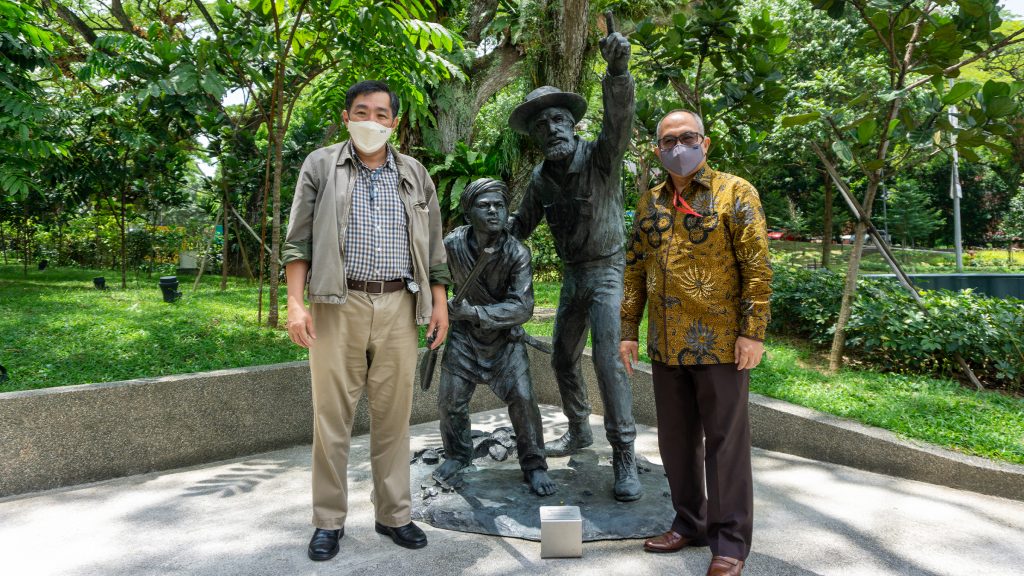News //
It was an honour to have the Ambassador of the Republic of Indonesia His Excellency Suryo Pratomo visit the museum for the first time on Thursday morning. The Ambassador was accompanied by Head of Information, Social and Cultural Affairs Ms Ratna Lestari Harjana, and his secretary Mr Dade Salampessy.
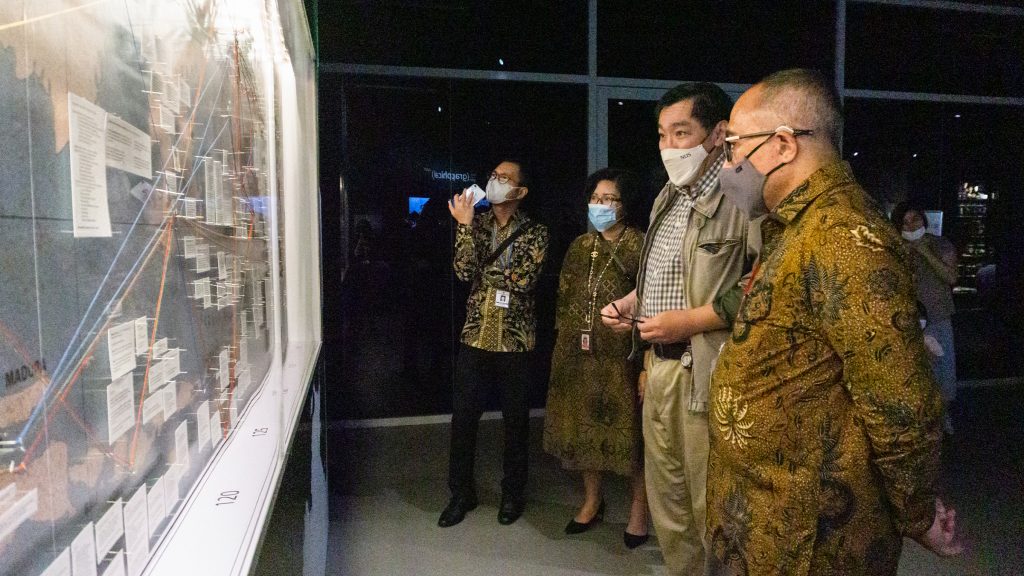
Museum Head, Professor Peter Ng, regaled them with stories along the tour highlighting the museum’s track record of research and collaboration in the Southeast Asian region and Indonesia, in particular. Prof Ng pointed out that our countries have the two oldest natural history museums in Southeast Asia—the Bogor Zoological Museum (founded in 1894), and the Lee Kong Chian Natural History Museum, whose origins date back to 1874.
Prof Ng was also especially appreciative that the establishment of the present-day museum drew the generous support of several prominent Indonesians, whose names are honoured in a plaque that hangs in our museum lobby.
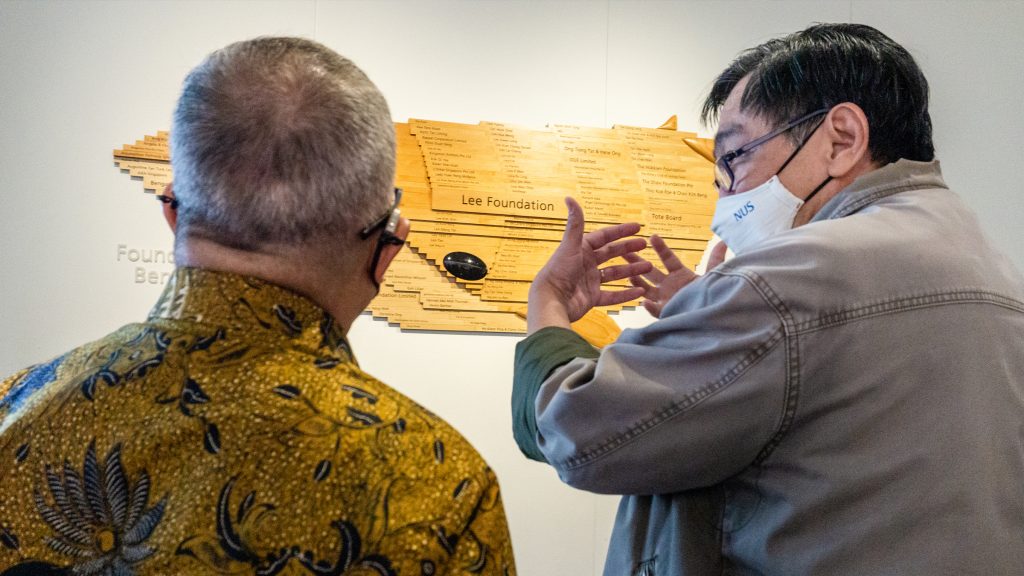
Among the more than 4,000 specimens displayed in the gallery, many have special connections to Indonesia, such as the life-size model of the Indonesian coelacanth beautifully suspended in life-like motion in one section of the museum. This species was discovered only some 20 years ago with the holotype specimen now in the Bogor Zoological Museum.
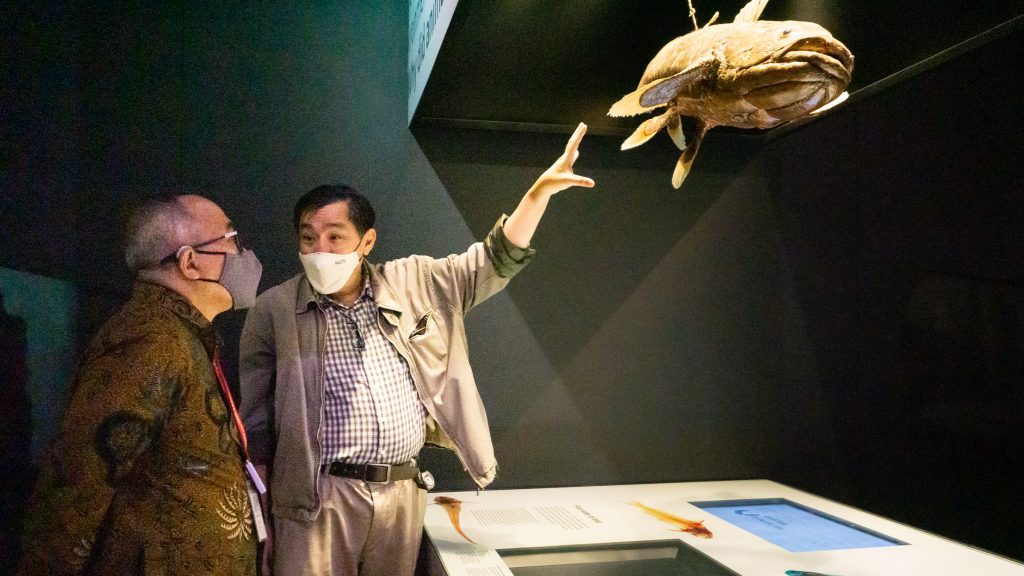
Over the years, our museum’s researchers have gone on numerous international expeditions, and collaborated closely with Indonesian counterparts to study and better understand the biodiversity and natural history of the Southeast Asian region. Prof Ng shared with the Ambassador about the exciting joint projects involving the two countries that have extended the frontiers of knowledge of flora and fauna of Indonesia and Southeast Asia in general.
In the early 2000s, the two countries led the first South China Sea Expedition to the Anambas and Natuna Islands to explore the islandic fauna. We have also conducted joint studies of various animal groups in the Moluccas, Sulawesi, Java, Sumatra and Kalimantan. The museum regularly hosts Indonesian scientists and students who are working on regional biodiversity, and dozens of joint papers have been published over the years.
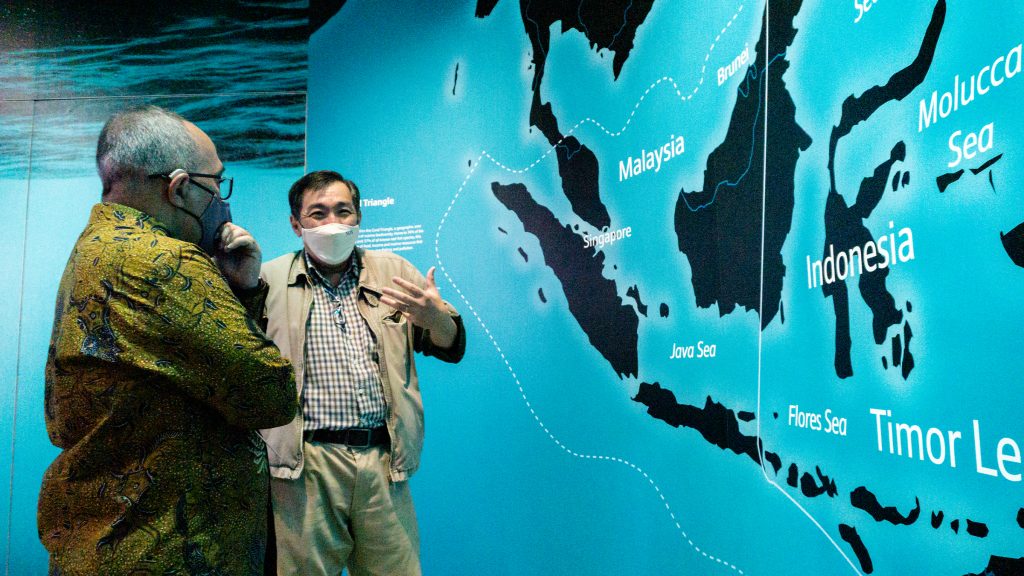
The first concerted deep-sea expedition in the largely unexplored waters in the Indian Ocean off the southern coast of West Java in 2018 was a shining example of the fruitful alliance between Singapore and Indonesia. Co-led by our museum and the Indonesian Institute of Sciences (LIPI), the planning and execution for such a major expedition came with many challenges, but Prof Ng recalled with gratitude the tremendous help received from the Ministry of Foreign Affairs of Indonesia and LIPI, which made the whole expedition possible.
When shown the new species of giant isopod (Bathynomus raksasa) collected from the SJADES 2018 expedition, both the Ambassador and Ms Ratna were in awe of the gigantic size and significance of the find. Both felt that its scientific epithet ‘raksasa’ (meaning ‘giant’ in Indonesian) was entirely fitting. This monster of the sea, described by Indonesian and Singaporean scientists in 2020, has already received substantial coverage by the media because of its novelty.
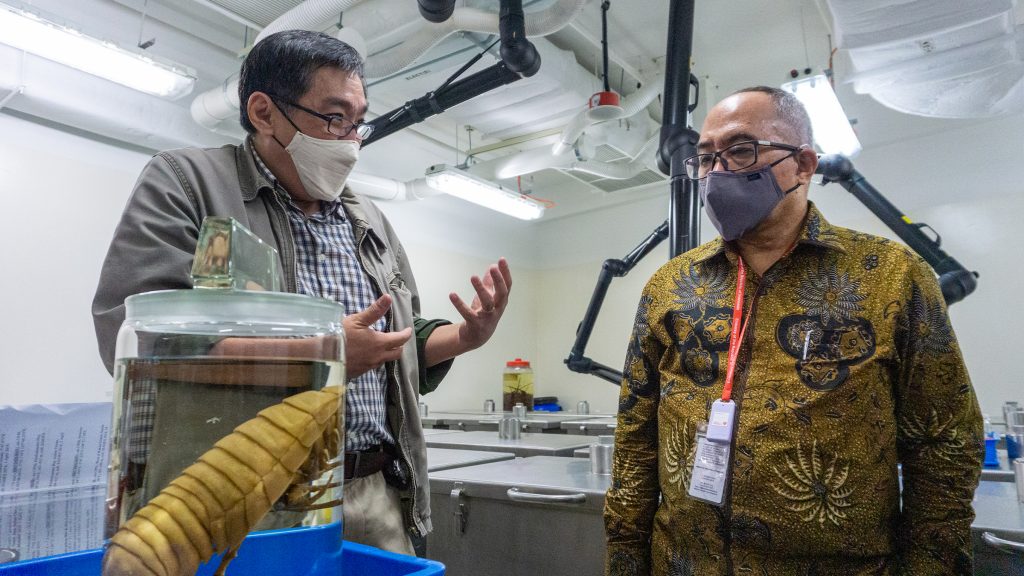
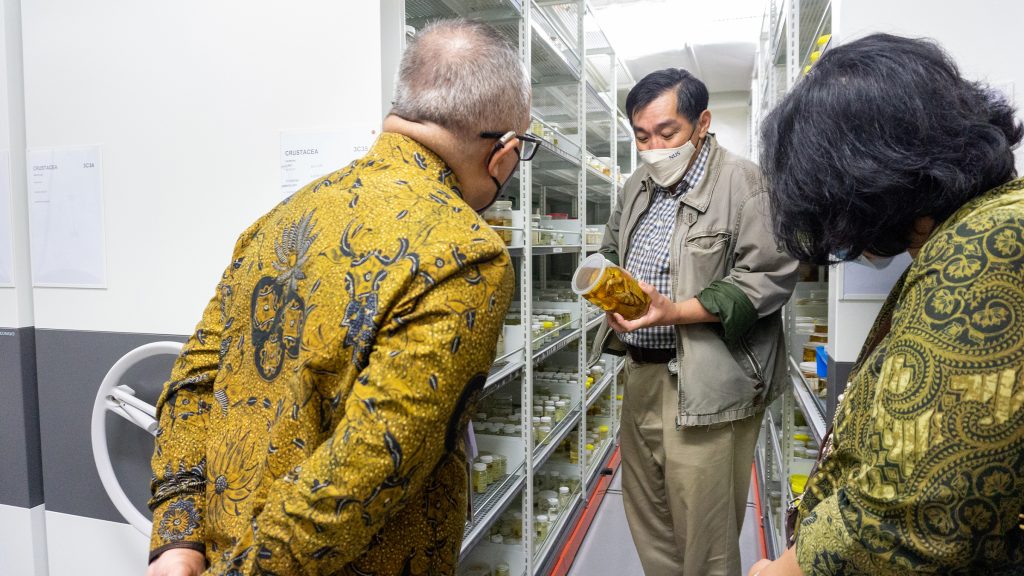
Prof Ng spoke of the many outcomes attained from the expedition with new discoveries in several journal articles published, and more to come and a book due in the middle of this year. The Ambassador and Prof Ng reaffirmed their commitment to extend collaboration and exchanged ideas on future projects for Singapore and Indonesia to cooperate in their shared interest to further biological knowledge, and importantly, to create opportunities for young researchers from both countries to work together; setting the stage for bilateral collaborations for generations to come.
